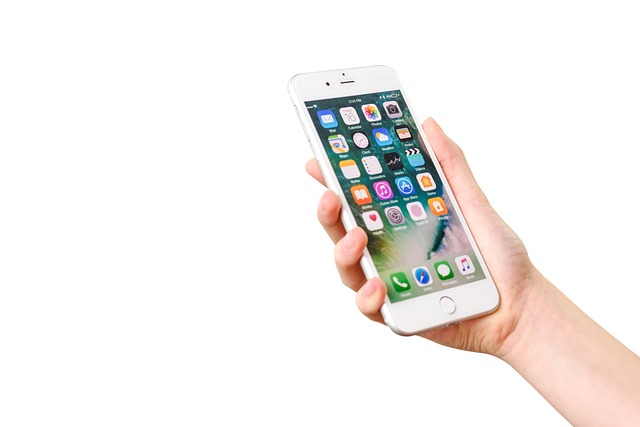
In today’s digital age, securing your online accounts is more critical than ever. As technology advances, so do the techniques used by cybercriminals to infiltrate personal and business accounts. From email and social media to banking and cloud storage, online accounts contain vast amounts of sensitive information that, if compromised, can lead to financial loss, identity theft, and other devastating consequences. In this comprehensive guide, we’ll explore various strategies and tools that can help you safeguard your online presence.
1. The Importance of Strong Passwords
A strong password is the first line of defense against unauthorized access to your accounts. Yet, many people continue to use weak passwords that are easy to guess. Here’s how to create and manage strong passwords:
Characteristics of a Strong Password:
- Length: Your password should be at least 12 characters long.
- Complexity: Use a mix of uppercase and lowercase letters, numbers, and special characters.
- Avoid Common Words: Avoid using common phrases, dictionary words, or easily guessable information such as your name, birthdate, or simple sequences like “123456.”
Use a Password Manager:
One of the challenges in creating strong passwords is remembering them. This is where password managers come into play. A password manager generates and stores complex, unique passwords for each of your accounts. Some popular password managers include LastPass, Dashlane, and 1Password. By using a password manager, you only need to remember one master password, and the tool takes care of the rest.
Don’t Reuse Passwords:
Reusing passwords across multiple sites is risky. If one site is breached, cybercriminals can use that password to try to access your other accounts. Always ensure that each of your accounts has a unique password.
2. Enabling Two-Factor Authentication (2FA)
Two-factor authentication (2FA) adds an extra layer of security by requiring two forms of verification before you can access an account. Even if someone gets hold of your password, they’ll still need the second form of verification to log in.
Types of Two-Factor Authentication:
- SMS-Based 2FA: After entering your password, you’ll receive a text message with a code that you’ll need to input to complete the login process. While convenient, SMS-based 2FA is not the most secure option as text messages can be intercepted.
- App-Based 2FA: Apps like Google Authenticator or Authy generate time-sensitive codes on your smartphone. This is more secure than SMS-based 2FA as the codes are not sent over the internet.
- Hardware Tokens: A hardware token like YubiKey provides a physical layer of authentication. You must physically connect the token to your device to log in, making it highly secure.
Why 2FA Is Essential:
Even with a strong password, there’s always a risk of it being compromised through phishing attacks, keyloggers, or data breaches. 2FA ensures that your account remains secure even if your password is stolen. Make sure to enable 2FA on all accounts that support it, particularly for email, banking, and cloud storage.
3. Protecting Your Email Account
Your email account is often the gateway to many other online services, as it’s commonly used for password resets. Securing your email should be a top priority:
Steps to Secure Your Email:
- Use a Strong, Unique Password: As mentioned earlier, never reuse passwords across different accounts.
- Enable 2FA: Make sure to enable 2FA for your email account, especially if it contains sensitive information or is used to manage other online accounts.
- Monitor Unusual Activity: Most email providers allow you to view the devices that have accessed your account. Regularly check this activity to ensure no unauthorized access.
- Be Wary of Phishing Scams: Cybercriminals often use phishing emails to trick you into revealing personal information or login credentials. Always verify the source of an email before clicking on any links or downloading attachments.
4. Securing Social Media Accounts
Social media accounts are often targeted by hackers for various purposes, such as identity theft or spreading malware. Here’s how to keep your social media accounts secure:
Privacy Settings:
- Regularly review and update your privacy settings. Limit who can see your posts and personal information.
- Be mindful of the information you share. Avoid posting sensitive details such as your phone number, home address, or financial information.
Use Strong Passwords and 2FA:
As with email accounts, social media platforms also allow you to enable 2FA. Be sure to use strong passwords and enable 2FA to reduce the risk of unauthorized access.
Be Cautious of Third-Party Apps:
Many social media platforms allow third-party apps to access your account. Be cautious about granting permissions to these apps, as they may collect more information than you realize. Regularly review and revoke access to any apps you no longer use.
5. Securing Banking and Financial Accounts
Your banking and financial accounts are perhaps the most sensitive accounts you own, as they directly control your money. Securing them is crucial to avoid unauthorized transactions and fraud.
Steps to Secure Financial Accounts:
- Use Strong Passwords and 2FA: Enable 2FA on all banking and financial accounts, and ensure you are using unique, strong passwords.
- Monitor Account Activity: Regularly review your account statements for any suspicious activity. Many banks allow you to set up alerts for transactions over a certain amount, giving you an extra layer of security.
- Beware of Phishing Scams: Cybercriminals often pose as banks to trick users into revealing login credentials. Always verify the legitimacy of any communication from your bank before responding or clicking on any links.
6. Recognizing Phishing Attacks
Phishing is one of the most common ways hackers steal login credentials. Cybercriminals often send emails that appear to be from legitimate companies, urging you to click on a link and enter your information.
How to Spot Phishing Attempts:
- Check the Sender’s Email Address: Phishing emails often come from addresses that look legitimate but are slightly altered. Always check the sender’s email address carefully.
- Look for Grammatical Errors: Many phishing emails contain spelling mistakes and grammatical errors. Be cautious if you notice any.
- Avoid Clicking Links: Instead of clicking on links in an email, go directly to the website by typing the URL into your browser.
- Verify Requests for Personal Information: Legitimate companies will never ask you to provide sensitive information like passwords via email.
7. Keeping Your Devices Secure
Your online accounts are only as secure as the devices you use to access them. Protecting your computer, smartphone, and other devices is essential for maintaining the security of your online accounts.
Best Practices for Device Security:
- Keep Software Updated: Regularly update your operating system, browser, and apps to ensure they have the latest security patches.
- Use Antivirus Software: Install reputable antivirus software to detect and block malware that could compromise your devices.
- Avoid Public Wi-Fi: Public Wi-Fi networks are often unsecured, making them prime targets for hackers. If you must use public Wi-Fi, use a virtual private network (VPN) to encrypt your internet connection.
- Lock Your Devices: Always use a password, PIN, or biometric authentication (such as a fingerprint) to lock your devices when not in use.
8. Backup Your Data
Even with the best security practices, there’s always a risk that your accounts could be compromised. To safeguard your information, regularly back up your data.
How to Backup Your Data:
- Cloud Backup: Services like Google Drive, iCloud, and Dropbox allow you to store your data securely in the cloud. Ensure that these accounts are protected with strong passwords and 2FA.
- Local Backup: In addition to cloud storage, consider backing up important files to an external hard drive.
9. What to Do If Your Account Is Hacked
Despite taking precautions, your accounts may still be vulnerable to hacking. If you suspect that one of your accounts has been compromised, act quickly:
Steps to Take:
- Change Your Passwords Immediately: If you can still access your account, change your password as soon as possible. If you cannot log in, use the account’s recovery process to reset your password.
- Enable 2FA: If you haven’t already, enable 2FA to prevent further unauthorized access.
- Monitor Your Other Accounts: If one of your accounts has been hacked, there’s a risk that others could be compromised as well, especially if you’ve reused passwords. Check your other accounts for any suspicious activity.
- Report the Incident: Many online platforms have a process for reporting account breaches. Reporting the incident can help prevent further damage and protect other users.




